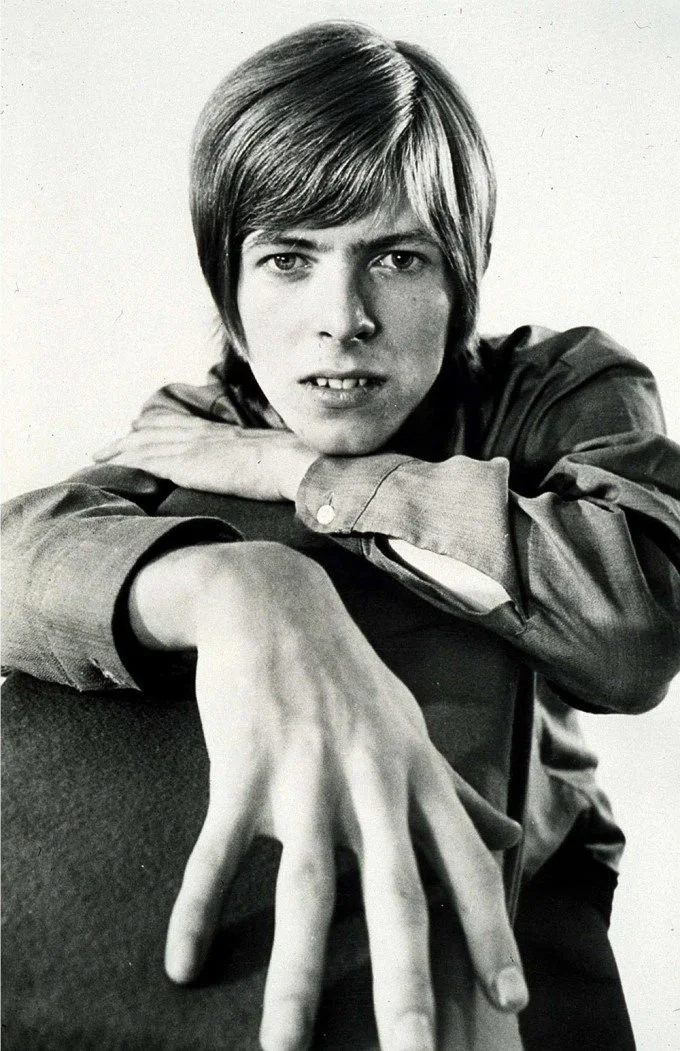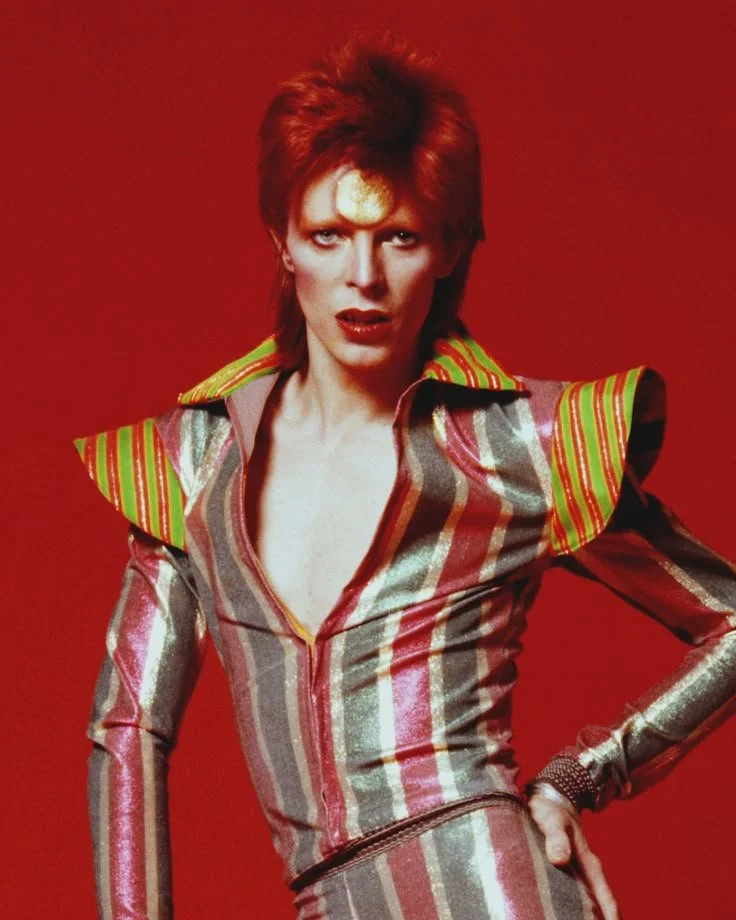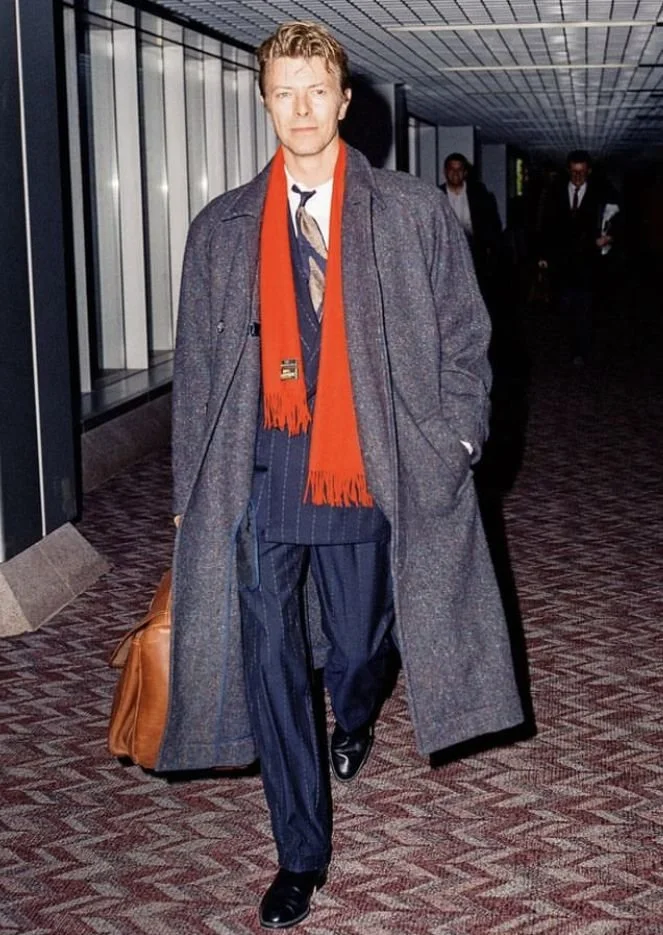London Boy
David Bowie, born David Robert Jones on January 8, 1947, in Brixton, London, was a pioneering artist renowned for his innovative contributions to both music and fashion. Throughout his illustrious career, Bowie adopted various alter egos, each reflecting his evolving musical styles and distinctive sartorial choices, thereby cementing his status as a cultural icon. In his teenage years, Bowie developed a passion for music, picking up the saxophone at age 13 and playing in several local London bands, including The Kon-Rads, The King Bees, The Mannish Boys, and The Lower Third. During this period, he embraced the Mod subculture, characterized by pointed boots, ankle-length trousers, and buttoned-up shirts, epitomizing the dapper gentleman aesthetic.
Bowie's ascent to fame began with the release of his 1969 single "Space Oddity," which reached the top five in the UK charts. The early 1970s marked a significant transformation in his career with the creation of his alter ego, Ziggy Stardust. This persona was characterized by flamboyant, androgynous fashion, including skintight outfits, vibrant makeup, and the iconic lightning bolt across his face. Bowie drew inspiration from various sources, notably Stanley Kubrick's "A Clockwork Orange" (1971), to craft Ziggy's distinctive look. This era produced seminal tracks such as "Starman," "Life on Mars?," and "Changes," which resonated deeply with fans and showcased his innovative fusion of music and fashion.
In the mid-1970s, Bowie underwent another stylistic shift with the release of the album "Young Americans" in 1975, marking his exploration into what he termed "plastic soul." Recording in Philadelphia, he collaborated with prominent musicians, including emerging talent Luther Vandross. The album featured hits like "Fame," co-written with John Lennon, which became his first US number-one single. This period saw Bowie adopting a more sophisticated image, often donning three-piece suits, ties, and stylish footwear, reflecting his ability to seamlessly transition between musical genres and fashion styles.
In the early 1990s, Bowie met Somali supermodel Iman, who became his long-term partner and wife. This relationship coincided with another evolution in his fashion sensibilities, as he began to incorporate more eclectic and global influences into his attire. Collaborations with artists like Mick Jagger and performances with the rock band Tin Machine inspired a return to his rock roots, characterized by quiff hairstyles and bold eyeliner.
Bowie's chameleonic ability to reinvent himself over four decades left an indelible mark on both the music and fashion industries. His fearless experimentation and boundary-pushing artistry continue to inspire designers and musicians alike. Bowie's legacy as a trendsetter and visionary remains unparalleled, ensuring his influence endures for generations to come.
In summary, David Bowie's career was a testament to relentless innovation and self-reinvention. His profound impact on music and fashion is a lasting legacy that continues to inspire and captivate audiences worldwide.




